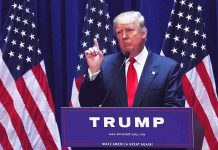
South Korea’s decision to dismantle its border loudspeakers, a symbol of decades-long psychological warfare, has left experts questioning whether this unilateral gesture will lead to any real change as North Korea remains publicly dismissive and unresponsive.
Story Snapshot
- South Korea begins removing DMZ loudspeakers as a gesture of reconciliation with the North.
- The move follows the suspension of broadcasts in June and comes without any matching action from North Korea.
- North Korea’s leadership swiftly rejected South Korea’s peace overtures, calling them insufficient.
- Experts say the impact hinges on North Korea’s response, which so far is skepticism and silence.
South Korea Dismantles Loudspeakers at DMZ in Unilateral Step
On August 4, 2025, South Korea’s military began dismantling approximately 20 fixed loudspeakers along the Demilitarized Zone, marking a significant move to reduce tensions with North Korea. These loudspeakers, which have broadcast anti-North Korean messages, K-pop, and news into the North for decades, were silenced in June as a prelude to this removal. The Lee Jae-myung administration framed the action as a practical step to build trust and create space for future dialogue, even as North Korea was not consulted and has not reciprocated by taking down its own propaganda units.
The plan to complete removal within a week was set in motion by the South Korean Ministry of National Defense, which stated that the step would not compromise military readiness or border security. The DMZ, a heavily fortified buffer zone separating the two Koreas since the 1953 armistice, has long been a flashpoint for both military and psychological conflict, with loudspeakers serving as a tool for information warfare and a constant reminder of the unresolved war. The suspension and now dismantling of these units is South Korea’s latest attempt at thawing relations, following a shift toward engagement after President Lee’s election earlier this year.
North Korea Rejects Reconciliation, Maintains Hardline Position
Despite South Korea’s overture, North Korea’s reaction has been swift and unequivocal. Kim Yo Jong, a senior official and sister to leader Kim Jong Un, issued a statement in late July firmly rejecting Seoul’s gestures as “insufficient” and reaffirming Pyongyang’s lack of interest in dialogue or engagement with the South. While North Korea ceased using its own loudspeakers after the June suspension, it has not begun dismantling them. The North’s leadership has consistently viewed the broadcasts as psychological warfare and a threat to regime stability, maintaining a hardline stance even in the face of South Korea’s de-escalation efforts.
South Korean officials remain committed to the removal, describing it as a confidence-building measure and a demonstration of sincere intent to reduce tensions. However, the lack of any reciprocal action from the North raises concerns about the long-term impact and whether the gesture will translate to meaningful change on the peninsula. The episode echoes past cycles of engagement and provocation, with periods of détente often followed by renewed hostility when political winds shift in either capital.
Expert Analysis: Symbolic Gesture or Catalyst for Change?
Analysts and scholars are divided on the significance of South Korea’s move. Lim Sang-soon of Pyeongtaek University noted that while the loudspeakers have been an effective psychological weapon, their removal is a genuine attempt by the Lee administration to improve relations. Other experts suggest that unless Pyongyang reciprocates with substantive engagement, the dismantling remains largely symbolic. The prevailing consensus is that North Korea’s current position makes immediate progress unlikely, given the regime’s strategic distrust and history of dismissing Southern overtures.
For communities along the border, the removal of loudspeakers may bring short-term relief from the stress of propaganda broadcasts, but the broader security dynamics remain unchanged. The South Korean military has assured the public that readiness is not affected and that the move is limited to messaging-related infrastructure, not physical defenses. Politically, the action signals a notable shift in Seoul’s approach under President Lee, aiming to break the deadlock and lay groundwork for potential future engagement, though public skepticism lingers due to North Korea’s dismissive response.
Long-Term Outlook: Hope, Skepticism, and Unanswered Questions
While the dismantling of border loudspeakers is a visible step toward de-escalation, its effectiveness depends on North Korea’s willingness to engage—something that, according to statements from Pyongyang, is not on the horizon. All major reports from international and South Korean media corroborate the timeline and details, with no substantive contradictions in the sequence of events or official statements. The long-term implications remain uncertain: the move could pave the way for renewed dialogue if North Korea changes course, or it could stand as yet another unreciprocated gesture in the long, fraught history of inter-Korean relations.
For now, the DMZ grows quieter, but the silence may be more symbolic than substantive. The removal of the loudspeakers, while welcomed by some as a step toward peace, is met with skepticism by others who recall North Korea’s pattern of rejecting overtures without meaningful concessions. As the situation develops, South Korea’s resolve to pursue reconciliation will be tested by the North’s continued resistance and the unpredictability that has defined the peninsula for generations.














